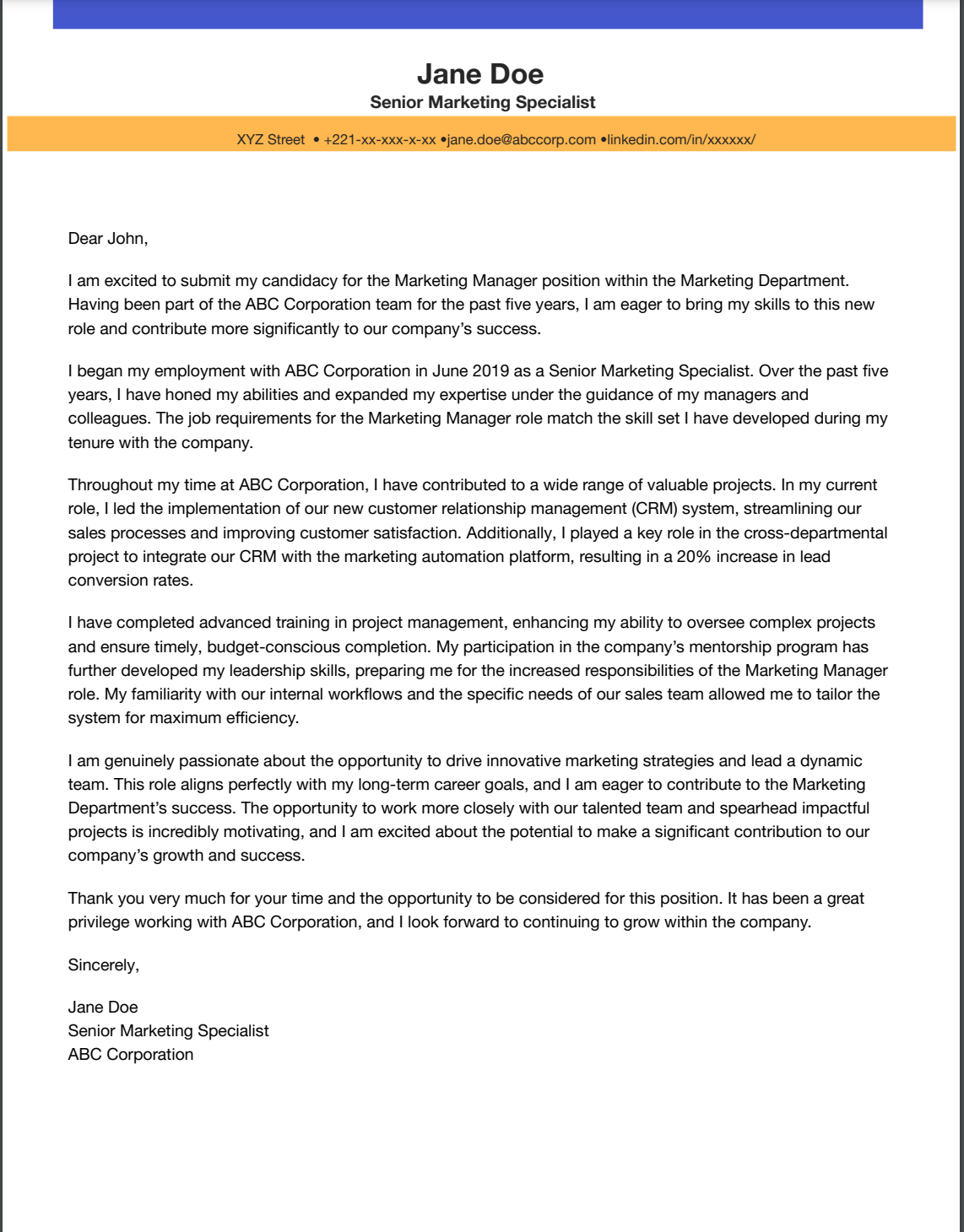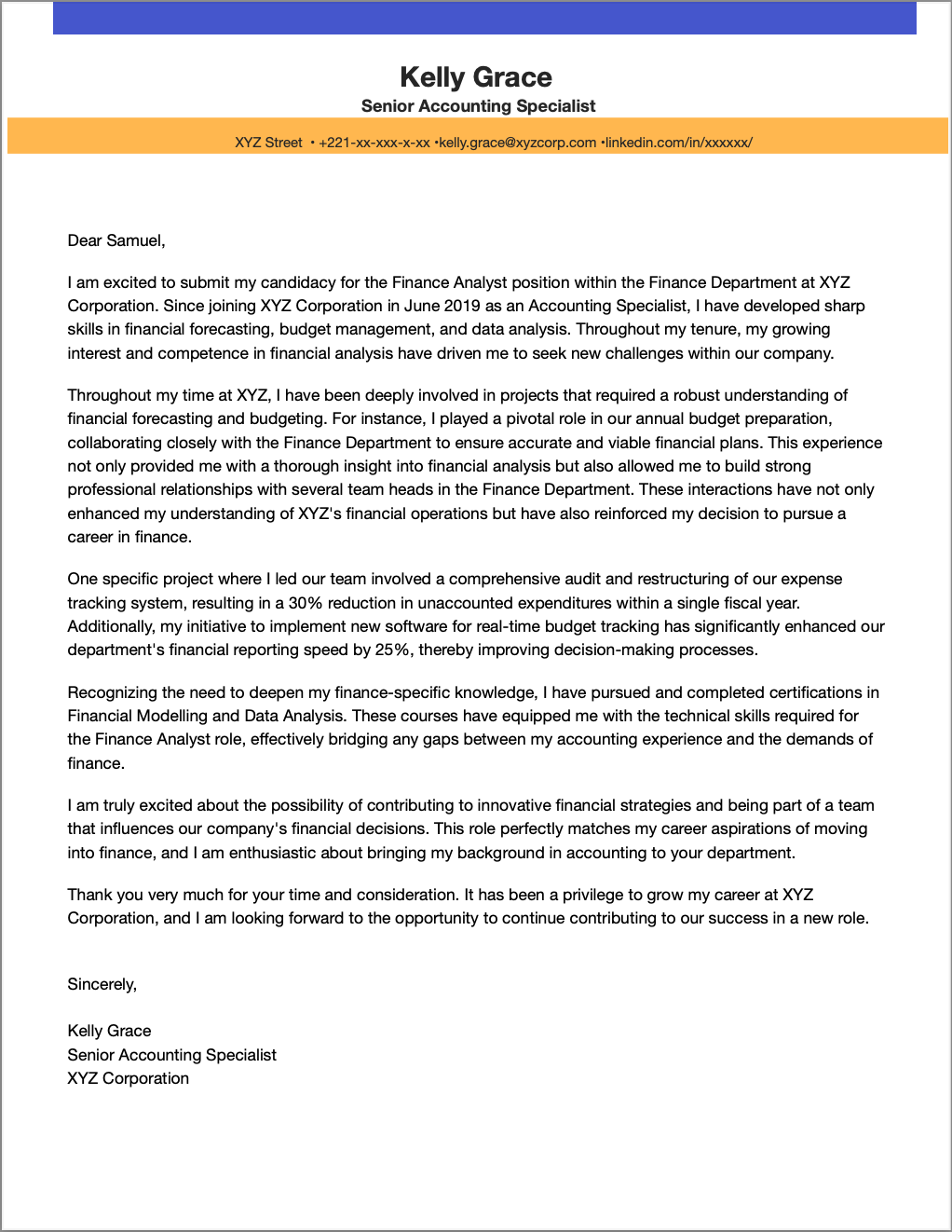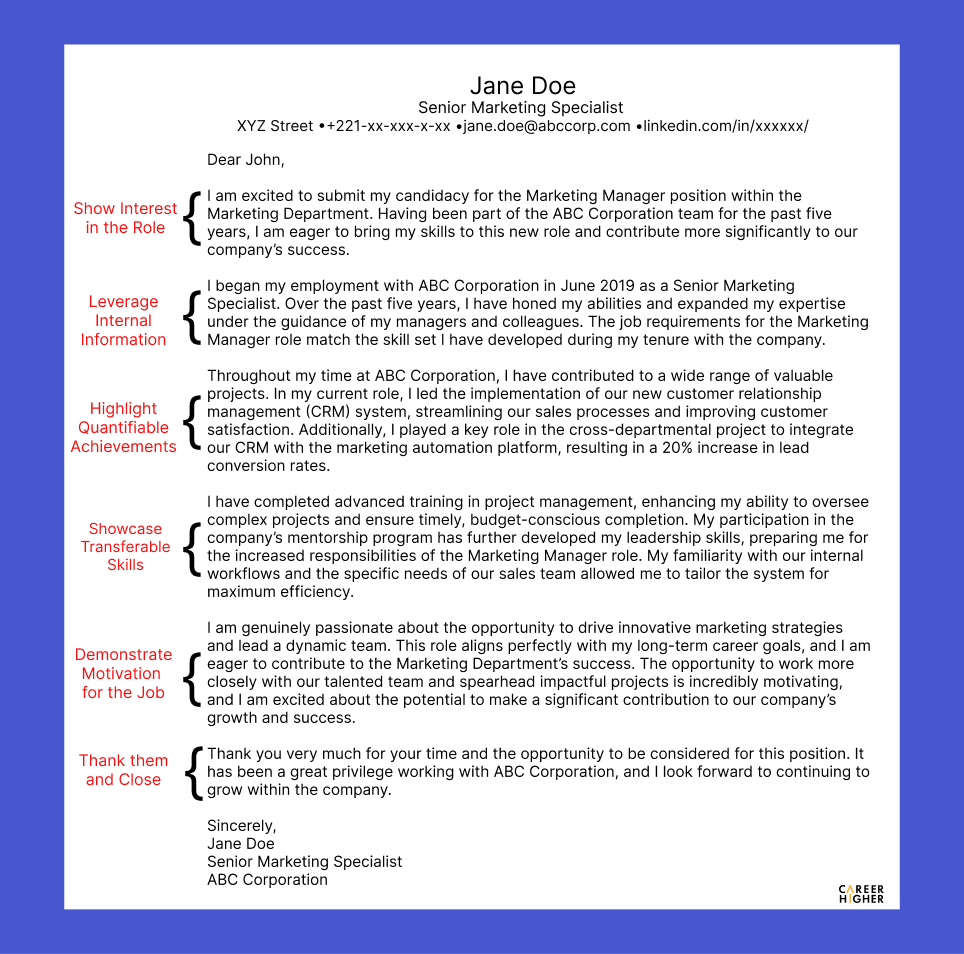Table of Contents
Do you love working at your current company but are looking for a change? Whether you’re aiming for a new role, a higher position, or a department transfer, applying for an internal job opening could be a good move for you. But don’t be too complacent. Being an existing employee doesn’t necessarily mean you are first in line for any open position in your company. You may have to compete with other internal or external candidates for the role.
How to Get Started When Applying for an Internal Position
1. Leverage Existing Relationships and Knowledge
Applying for an internal position is different from applying for an external one. Internal candidates should leverage their existing relationships and insider knowledge effectively. Start by arranging a meeting with the hiring manager or the head of the department you’re interested in. This face time can help you understand the role better and make a positive impression. You could also ask a colleague for a soft introduction.
2. Engage with Target Department Members
Connect with team members in the department you’re targeting. During informal meet-ups, share your enthusiasm and explain why you’re a good fit for the team. It’s also a good idea to inform your current supervisor about your intentions. This approach maintains transparency and ensures that your manager hears about your application from you first. Emphasize your desire for growth and new challenges rather than dissatisfaction with your current role.
3. Highlight Your Interest
Being an internal candidate is an advantage, but it’s your proactive efforts and genuine interest that will truly set you apart. After making your intentions clear, submit your application, including your resume and cover letter. Writing a cover letter for an internal position is important because it allows you to tell your story- why you want to make the shift, how you are the best candidate for the role, and what you bring to the table.
In this blog, we’ll discuss a step-by-step guide for crafting a compelling cover letter for an internal position.
How to Write a Cover Letter for an Internal Position
Writing a cover letter for an internal position requires a strategic approach to highlight your insider knowledge and commitment to the company.
Before diving into the details, here’s a summary of what your internal cover letter should consist of:
A. Contact Information
B. Introduction
C. Body of the Cover Letter
- Align Your Experience with the Job Description
- Match the Style of Your Company’s Communications
- Leverage Personal Connections and Internal Knowledge
- Highlight Specific and Quantifiable Achievements
- Showcase Cross-Departmental Experience and Transferable Skills
- Demonstrate Leadership and Readiness for Higher Responsibility
- Demonstrate Motivation for the Job
D. Conclusion
Step 1: Add a Contact Information Section
Although basic, the contact information section plays a vital role in your cover letter for an internal position. Make sure to use your internal credentials like your work email address and phone extension, as this reinforces your current relationship with the company. Moreover, address the cover letter to the specific hiring manager or department head by name. This demonstrates professionalism and familiarity with the company’s structure.
Step 2: Open with a Creative Intro
Your cover letter should have an engaging introduction to encourage the hiring manager to read it till the end. Start by clearly mentioning the specific position you are applying for and where you found out about the job opening (e.g., through an internal job board or a referral). Highlight a key qualification or experience that makes you an ideal candidate for the position.
Additionally, mention any relevant interactions with the hiring manager or department head to show that you are proactive and engaged. Conclude the opening paragraph by expressing your enthusiasm and readiness to take on new responsibilities.
Example:
“I am excited to apply for the Marketing Head position at ABC Corporation, which I learned about through our internal job board. In my current role as a Senior Marketing Manager, I have mastered skills in digital marketing, campaign management, and market analysis. These skills helped our department consistently surpass annual sales goals by 15%. I look forward to reaching new milestones and am eager to leverage my leadership, sales, and marketing expertise for this new challenge.”
Step 3: Compose the Body of the Cover Letter with Precision
In the body of your cover letter, you need to showcase how you are qualified for the target job. We recommend keeping the body to 2-3 paragraphs. Select the most relevant, impressive, and unique parts of your professional experience, including responsibilities, skills, and achievements, to create a powerful, cohesive, and compelling story.
Here are key points to follow:
1. Align Your Experience with the Job Description
Start by thoroughly reviewing the job description and noting all the requirements. Describe how your current job functions, skill sets, and career goals align with the target position. Having discussed the role with the hiring manager and the concerned department, leverage your understanding of the specific nuances and requirements of the new role.
Example:
“I have closely reviewed the requirements for the Senior Marketing Manager position and believe my current role as Marketing Coordinator aligns perfectly with these expectations. Over the past 3 years, I have developed advanced skills in digital marketing and led several successful campaigns, which mirror the key responsibilities of the new role. In my recent discussions with John Smith, the Director of Marketing, I gained deeper insights into the strategic goals of the department, which align perfectly with my experience in driving digital engagement.”
2. Match the Style of Your Company’s Communications
Use the tone, voice, and language that your company follows to ensure consistency. Match the formality and style of your company’s communications. If your company’s internal communications are typically casual and friendly, reflect that in your cover letter. Conversely, if the tone is more formal and professional, maintain that level of formality. Use the jargon, values, and terms commonly used within the company.
Example:
“At BrightTech Solutions, our culture is rooted in transparency and collaboration. My current role has allowed me to contribute to these principles through leading innovative projects like the ‘Future Forward’ initiative, where I utilized my skills in project management and cross-functional teamwork to drive results. Our team’s ethos of ‘transparency in innovation’ resonates deeply with me, and I look forward to continuing this approach in the Senior Marketing Manager role.”
3. Leverage Personal Connections and Internal Knowledge
Reference any previous interactions or collaborations with the hiring manager, the department head, or the team you’re looking to join. This personal connection can make your application stand out. Demonstrate your deep understanding of the company’s operations, culture, and goals by mentioning specific company initiatives, values, or missions you’ve been a part of or admire.
Example:
“My work on the ‘Green Future’ project with Jane Doe and the Environmental Sustainability team has given me invaluable insights into our department’s goals and challenges. I am particularly proud of our collaboration on reducing our carbon footprint by 20% over the past year. Additionally, in our recent conversation, Jane emphasized the need for continued innovation in our sustainability efforts, which I am eager to support in the new role.”
4. Highlight Specific and Quantifiable Achievements
Use specific and quantifiable examples to illustrate your accomplishments. Be honest, as your information can be verified. Since you’re applying internally, you can highlight any ongoing projects as well. Discuss any internal training, mentorship, or development programs you have participated in and how they have prepared you for the new role.
Example:
“Through my role, I have successfully increased our social media engagement by 35% over the last six months. My participation in the ‘Leadership Development Program’ has further equipped me with the skills needed to excel in the Senior Marketing Manager position. During my training sessions, I learned key strategies that are directly applicable to the upcoming initiatives we discussed.”
5. Showcase Cross-Departmental Experience and Transferable Skills
If you are moving to a different department, explain how your current role has provided you with a comprehensive understanding of the company that will benefit the new department. Highlight any cross-departmental projects you’ve been involved in and the transferable skills you’ve developed.
Example:
“Working on cross-departmental projects such as the ‘Customer Journey Optimization’ initiative has allowed me to develop a holistic understanding of our company’s operations. These experiences have honed my analytical and problem-solving skills, which I am eager to bring to the Sales Department. My recent discussions with the Sales team highlighted their need for data-driven strategies, a skill set I have refined through these projects.”
6. Demonstrate Leadership and Readiness for Higher Responsibility
For a higher position, focus on your leadership experiences, successes in your current role, and how they demonstrate your readiness for more responsibility. Detail the relevant skills and experiences from your current role that make you a strong candidate, and explain your motivation for the change.
Example:
“In my current role, I have led the Digital Transformation team, achieving a 40% increase in online sales within six months. These experiences have not only refined my leadership skills but also prepared me to take on the responsibilities of the Director of Marketing. My motivation to step into this role stems from my commitment to furthering our company’s mission and driving continued success. During my discussions with the executive team, I identified key growth areas that align with my strategic vision for the department.”
7. Demonstrate Motivation for the Job
Showcase your motivation for taking on this job by highlighting your ongoing commitment to the company’s mission, vision, and values. As an internal candidate, leverage your insider knowledge to explain why you enjoy working for the company and how the target position aligns with your long-term career goals. However, don’t just focus on yourself. Explain how your role in the new position will contribute to the company’s strategic objectives. This will demonstrate that you understand the company’s direction and are committed to its success.
Example:
“I am genuinely passionate about continuing to contribute to ABC Corporation’s mission of delivering innovative marketing solutions. The Marketing Head role aligns perfectly with my career aspirations, allowing me to leverage my skills in strategic planning while furthering our company’s vision of being a market leader. Over the past five years, I have deeply valued our commitment to sustainability and innovation, which resonates with my own values and work ethic. Being part of a team that prioritizes these principles excites me, and I am eager to contribute to our continued success and growth in this new capacity.”
Step 4: Close the Cover Letter Strong
End your cover letter by thanking the hiring manager for considering your application. Show your gratitude for the opportunities you’ve had to grow in your current role. This will highlight your appreciation for the training and responsibilities you’ve received and how you’ve made the most of them. Finally, express your readiness to discuss the opportunity further or provide any additional information they need to make their decision.
Example:
“Thank you very much for your time and the opportunity to be considered for this position. It has been a great privilege working with ABC Company since early in my career, and I look forward to continuing to grow within the company. Please let me know if there is any other information I can provide, and I would be happy to send it your way.”
Sample Cover Letters for Internal Positions
1. Sample Cover Letter for Internal Promotion
Download Word Sample | Download PDF Sample

2. Sample Cover Letter for Internal Transfer
Download Word Sample | Download PDF Sample

Top Tips for Writing a Cover Letter for an Internal Position
In this section, we’ll highlight some key tips for crafting a cover letter for an internal position. Unlike external applications, an internal cover letter should focus on your familiarity with the company and underscore your readiness to take on the new role. Let’s see below.
- Familiarize Yourself with the New Role: Use your access to company resources to understand the specifics of the new role. Reach out to HR or the team you’re aiming to join. This will help you tailor your cover letter to address key responsibilities and requirements effectively.
- Focus on the Role: As an internal candidate, emphasize your interest more in the specific position rather than the company itself. Highlight how your current job functions and career goals align with the new role, demonstrating your suitability.
- Leverage Past Collaborations: If you’ve previously worked with the team or department you’re applying to, highlight these collaborations in your cover letter. This not only shows your acquaintance with the team’s dynamics but also demonstrates your ability to work in the new team.
- Use Internal Recommendations: Include a referral from a trusted colleague or supervisor. A strong recommendation can significantly enhance your application’s credibility and make a positive impression on the hiring manager.
- Maintain Professionalism: Even though you are familiar with the company, keep your tone professional. Treat the cover letter with the same seriousness as you would for an external position.
- Address Any Gaps: If there are skills or experiences you lack for the new role, address them directly. Explain how you plan to quickly acquire these skills or how other aspects of your background compensate for these gaps.
- Show Cultural Fit: Highlight how your values and work style align with the company’s culture. Use examples of how you have thrived in the company’s environment and contributed to its positive culture.
Conclusion
Writing a cover letter for an internal position requires a focused approach. Emphasize your familiarity with the company, highlight your achievements, and illustrate your alignment with the company’s goals. Start with an engaging introduction, detail your accomplishments and relevant skills, and express your motivation for the new role. Use specific examples and maintain a professional tone throughout. We understand how challenging changing jobs can be. If you are looking for professional help, we are here for you.












